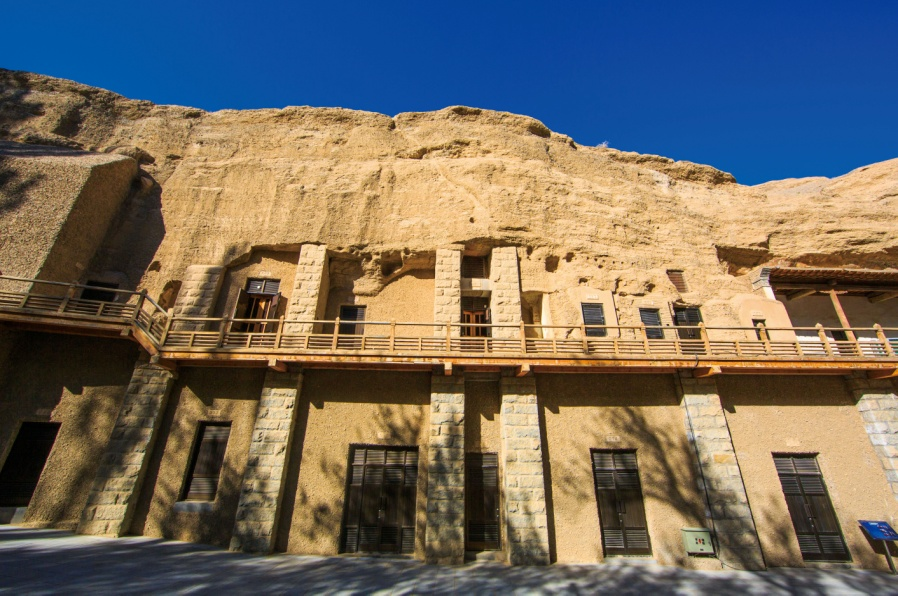The Mogao Grottoes is located in the southeast margin of Dunhuang basin, 25 km away from Dunhuang city, east of Sanweishan, and west to the Mountain Mingshashan. The grottoes group are carved in the steep hills of the west bank of the Daquan River, which is about 1600 meters long and about 25 meters high. There are 492 caves with relics, 200 or so of which are abandoned. The strata Mogao Grottoes are in can be divided into three layers: the Lower Pleistocene outwash-diluvial conglomerate of Yumen Group, the Middle Pleistocene pluvial – alluvial half cemented conglomerate of Jiuquan Group and the Upper Pleistocene pluvial sand and gravel layer of Gobi group. The Mogao Grottoes with profound historical and cultural details are carved in the conglomerate of Jiuquan Group (Fig. 4-28).
The conglomerate of Jiuquan Group is distributed in the front of Sanwei Mountain, Xiaohong Mountain and the west diluvial fan, the exposed area of which is about 60 km2. It forms the surrounding rocks of the Mogao Grottoes, Yulin Grottoe and the Thousand-buddha Grottoes, the lithology of which is a set of single gray sand gravel. The structure of it is tightly compacted while some local part is loose, with the calcium argillaceous cementation. Micro bedding structure develops, containing irregular fine to medium sand lens in it. According to the rock thin section identification, the composition of the Jiuquan conglomerate rock is mainly granite, quartzite, gabbro, phyllite, gneiss and limestone. The main mineral composition of the gravel is quartz, feldspar, calcite, pyroxene, amphibole and biotite. Jiuquan Group conglomerate is of good engineering geological condition and easy to be artificially dug, providing good natural conditions for the digging of the Mogao Grottoes (Guojun Zhang, et al., 2005).

Figure 4-28 formation of Mogao Grottoes
 简体中文
简体中文
